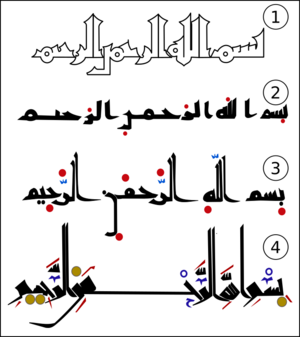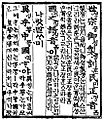Diacritic facts for kids
| Diacritical marks | ||||||||||||||||||||||||||||||||||||||||||||||||||||
|---|---|---|---|---|---|---|---|---|---|---|---|---|---|---|---|---|---|---|---|---|---|---|---|---|---|---|---|---|---|---|---|---|---|---|---|---|---|---|---|---|---|---|---|---|---|---|---|---|---|---|---|---|
|
||||||||||||||||||||||||||||||||||||||||||||||||||||
|
|
||||||||||||||||||||||||||||||||||||||||||||||||||||
A diacritic is a small mark added to a letter. You might see it above, below, or through a letter. The word "diacritic" comes from a Greek word meaning 'distinguishing'.
These marks usually change how a letter or word is said. Most alphabets don't perfectly show all the sounds of a language. Diacritics help to make the pronunciation clearer. They are not very common in English. However, they are used a lot in many other languages.
Contents
What Are Diacritics?
Diacritics help us know how to pronounce words. They can also change the meaning of a word. Imagine if a letter could make different sounds. A diacritic tells you which sound to use.
For example, the little mark above the "e" in "café" is a diacritic. It tells you to say "e" differently than in "bed." Without it, the word might sound different.
Diacritics in English
English often uses two letters together to make one sound. These are called digraphs. Examples include "sh" in "ship" or "oo" in "moon." This is different from using diacritics.
Modern English doesn't use many diacritics. Two common ones are the dot above "i" or "j." Also, the apostrophe is a type of diacritic. It shows missing letters, like in it's (for it is). It also shows possession, like in Mike's car. Most people don't think of these as diacritics anymore.
Sometimes, you might see two dots over a vowel. This is called a diaeresis. It shows that two vowels next to each other are said separately. For example, in coöperate, the two "o"s are pronounced as two sounds. This is still used sometimes.
Diacritics are also seen in words borrowed from other languages. These are called loanwords. Examples include naïve, entrée, and façade.
Diacritics in Other Languages
Many languages use diacritics regularly. They are very important for reading and speaking correctly.
French Language Diacritics
In French, the letter e often has diacritics.
- The acute accent é makes an "e" sound like in "say."
- The grave accent è makes an "e" sound like in "bed."
- The cedilla ç makes the "c" sound like an "s."
The circumflex î (a little hat) often shows that a letter used to be there. For example, maistre became maître. It can also tell words apart that look the same. For instance, sur means "on," but sûr means "safe."
Spanish Language Diacritics
In Spanish, the acute accent shows where the stress is. For example, in educación, the stress is on the last part. Usually, the stress is on the second-to-last part of a word.
The tilde ñ is a special letter. It sounds like "ny" in "canyon." It is treated as a separate letter in Spanish dictionaries. It comes after the letter "n."
German Language Diacritics
In German, the umlaut ü sounds like "ue." It is less common in modern German writing. However, old names should keep their umlauts if they had them.
Languages like Swedish, Norwegian, and Danish have special letters with diacritics. These are ä, ö, and å. They are seen as new letters in their alphabets. They are sorted after "z" in dictionaries.
Diacritics in Non-Roman Scripts
Scripts for languages like Arabic and Hebrew use many diacritics. These languages originally did not have separate letters for vowels. Diacritics were added to show vowel sounds. They also help with different ways people speak the language.
However, these diacritics are not always used in everyday writing.
Images for kids
-
A blackboard at Harvard University showing students learning Spanish diacritics.
See also
 In Spanish: Signo diacrítico para niños
In Spanish: Signo diacrítico para niños





